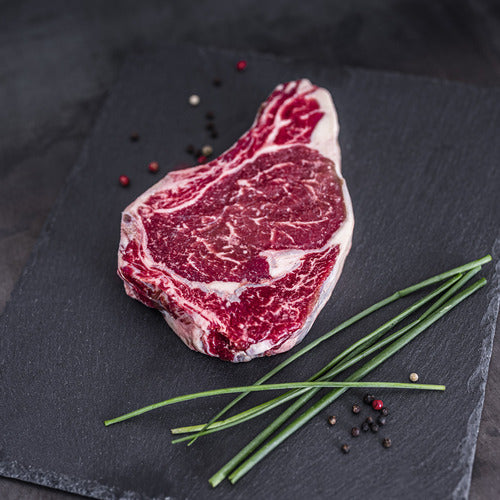
Grass-fed beef comes from cattle fed 100% grass-fed diets throughout their lives . Oxen are not naturally designed to digest grains. Feeding them this type of food has been shown to have negative effects on the animal's health.
Grass-fed beef is therefore considered healthier for humans than grain-fed beef. Here are some good reasons to choose this type of meat.
Better taste
Grass-fed beef has a different, less consistent flavor than grain-fed beef. Many people think that grass-fed beef tastes better and is more tender than grain-fed beef. Both are absolutely true, but it's also how you cook grass-fed beef that really makes the difference.
Beef without antibiotics
Pasture-raised cattle graze and move freely. This stress-free environment prevents disease and therefore reduces the need for antibiotics. Many grass-fed beef farmers raise their animals without antibiotics , because they pay attention to what will end up on your plate.
In contrast, antibiotics are sometimes overused for beef raised indoors for disease prevention. Some suggest that the levels of antibiotics in grain-fed beef may be enough to cause serious future effects, such as developing immunity to common illnesses.
No growth hormones
Many farmers use growth hormones to make their livestock gain weight faster than they would naturally. Health experts believe that this process harms the quality of the animals' diet and can change the composition of their fatty tissues. This can have consequences on the quality of beef tissues .
Better quality meat
Meat quality is not only determined by how the animal is raised. Race also plays a role. For example, pasture-raised Black Angus cattle tend to produce better meat than those raised indoors. Likewise, cattle that live outdoors generally produce a more tender product than animals that come from confined spaces and whose diet is little varied.
Cows raised on pasture can roam freely , move and exercise. This promotes muscle development – as evidenced by the marbling of the meat. Grass-fed beef actually contains less fat than grain-fed beef.
Healthier for humans!
Grass-fed beef also has better nutritional value than grain-fed beef.
According to a study in the Nutrition Journal , feeding grass to beef can significantly improve the fatty acid (FA) composition and antioxidant content of meat. Grass-fed beef also has higher levels of good cholesterol (HDL), compared to grain-fed beef. Some studies have also confirmed that grass-fed beef contains more vitamin B-12 than grain-fed beef.

Better for the environment
Grass-fed beef is better for the environment than grain-fed beef. Grasslands naturally capture CO 2 , making them ideal for mitigating global warming by reducing our carbon footprint.
Grass-fed cattle produce fewer greenhouse gases than grain-fed beef, which spends less time on pasture. According to some studies carried out in Canada, a beef produces 2,200 kilograms of greenhouse gases on average. Pasture-raised cattle produce 800 , as 1,400 kilograms are sequestered in pasture soil.
How to get grass-fed beef?
Would you like to try grass-fed beef? This type of product is generally not available in supermarkets and must be purchased directly from a farm or from a butcher's shop . The best way to get quality meat is to get it directly from the producer . Visit the Mon Beau Bon Bœuf online butcher shop: you will find several types of cuts of meat there, such as Tomahawk, flank steak or tournedos.
